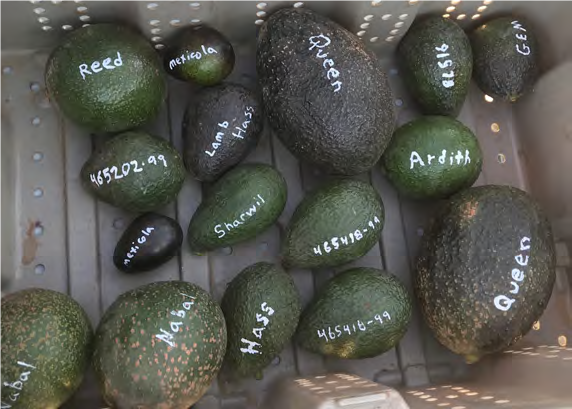Authors: Kate Evans, Washington State University, and Michael Coe, Cedar Lakes Research Group, LLC
This blog is based on researched published in Crop Science Journal (https://acsess.onlinelibrary.wiley.com/doi/10.1002/csc2.20227)
What is the status of public plant breeding programs in the United States?
Most plant-based foods we eat today are a product of innovative plant breeding programs. Careful choice of plant parents is followed by a multitude of intentional, hand-pollinated blooms. These result in thousands of unique seeds. This is just the start of a long process to create better crops.
In a paper we published recently in Crop Science, we outline a very critical issue: U.S. public investment in plant breeding programs has fallen. The current funding model of short-term grants (1-, 2- or sometimes 5-year awards) is particularly challenging for breeding programs which require typically a 7- to 12-year process, or far longer.
Crop breeders are not just looking for characteristics like drought tolerance or disease resistance in their breeding programs. They also must create new crops with these characteristics that taste good!
- Breeders select plant parents based on desirable characteristics. These could be taste, size, cooking ability, yield, disease resistance and more.
- They then cross-pollinate, growing seeds that are hybrids of the parents. They are the “children.”
- These “child” seeds are germinated, nurtured, and then meticulously evaluated. Many inferior seedlings are ultimately discarded, with only a few of them advancing to a new round of parenting.

Crops go through many such cycles of newly-created diversity and intentional selection. Eventually, the plant breeder may become satisfied that an elite seedling has what it takes to become a successful new variety. This practice is a long-term endeavor. Some crops can be brought to market in a few years, but crops like apples can take well over a decade.
The benefits of public plant breeding programs
As a result of plant breeding, yields and quality have increased, resulting in remarkable improvements in agricultural production systems. Related species have been used as parents to give important crop plants tolerance to biological and physical stressors. New varieties are adapted to withstand harsh growing conditions or potentially devastating invasive pests or diseases. As climate conditions and ecosystems change, plant breeding is an essential tool to address our long-term food security.
Both private and public institutions have crop breeders working to improve our food supply. Public plant breeding programs often focus on crops that are important to society but may be less profitable than crops that drive the bottom line for large businesses. These crops may have long generation times or otherwise be challenging to breed. They may be the focus of regional cultural specialties or beloved niche markets. Private breeding programs usually must focus on large multinational commodity markets with a potential to generate large, near-term financial returns on private investment. Given these pressures, private companies may find it difficult or impossible to address smaller national or regional markets or longer-term needs.
Public plant breeding programs frequently target such longer-term goals, many of which address food security issues. For example, “pre-breeding” enriches our agricultural base with diverse plant characteristics from crop wild relatives or other related plants. This requires a lot of research, and significant risk that some efforts won't pan out. But these trials can create new, superior seedlings which make it possible for public breeding programs and private breeding companies to produce important new crop varieties.
Public plant breeding programs also play a key role in educating the next generation of plant breeders and plant scientists for both public and private programs.

Funding issues cause problems
Several studies over the past 30 years have looked at the status of breeding programs. Each showed that U.S. plant breeding capacity is at risk. Budgets and personnel availability continue to decline, despite the development of new plant breeding technologies.
Our most recent survey cited above, in 2018, updated this information. The data indicates a significant reduction in public breeding program personnel over the last 5 years, and aging program leaders. Many programs report that budget shortfalls and uncertainty endanger or constrain their ability to support key personnel, maintain core infrastructure and operations, and make use of current technology.
Many surveyed said that when funding is reduced or sporadic, they focus on sustaining the most basic core operations of the program. These are items like fixing the greenhouse roof and watering the fields. Applying new scientific advances or continuing graduate student and postgraduate training opportunities are typically the first losses. This impacts not only the public program's advanced goals but also development of a long-term social resource: the next generation of plant breeders.
The bottom line is that the struggle to maintain adequate funding hampers public breeding programs. The timeline to bring new crops to market exceeds the time period of most funding sources by years. This requires program leaders to devote much of their time to the constant search for more funding, rather than focusing on their actual work. One solution is to create longer-term grant programs. Otherwise, advances in important crops that are not global commodities could start to decline.

Our study shows public plant breeding programs are at risk of disappearing. They need reinvigorated, stable, long-term access to funding, technology, knowledge, and expertise.
U.S. plant breeding capacity as a whole (both public and private) and, more broadly, U.S. food security, natural resource resilience, and public health will erode if the trajectory of declining budgets and reduced staffing and expertise in public plant breeding programs is allowed to continue.
Public plant breeding programs are easy to overlook, but their loss would be a devastating blow to our food system.
